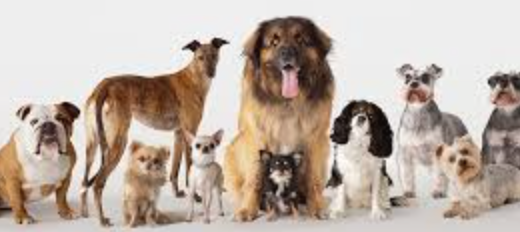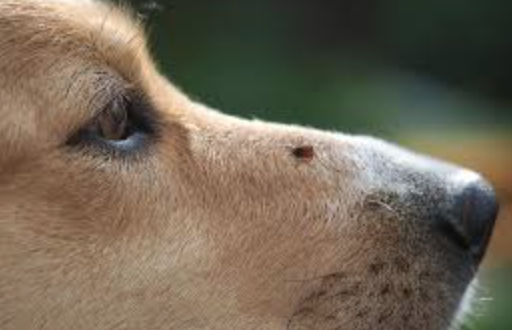Last Updated on 05/20/2025 by Kimberly
Anaplasmosis might not be the most talked-about condition, but it’s one every dog owner should know about. This tick-borne disease, caused by bacteria from the Anaplasma genus, can have serious repercussions if ignored. It primarily comes in two forms for dogs: Anaplasma phagocytophilum and Anaplasma platys.

Each type of anaplasmosis targets different blood cells. Anaplasma phagocytophilum affects white blood cells and is often associated with systemic infections. On the other hand, Anaplasma platys targets platelets, which can result in clotting issues. Understanding these types helps in getting a grip on the potential health impacts anaplasmosis can have on your furry friend.
Knowing where this disease shows up most can steer prevention efforts in the right direction. Regions with dense tick populations, like parts of the Northeast and Upper Midwest in the United States, report higher anaplasmosis cases. If you live in or travel to these areas with your dog, staying alert to tick prevention is key.
Ticks are the main culprits when it comes to spreading this disease. These small parasites carry the bacteria and pass them to dogs upon attaching and feeding. It’s a good reminder for every dog owner to keep a watchful eye on their pet’s skin, especially after outdoor adventures in tick-heavy environments. Regular checks and effective tick prevention can go a long way in keeping anaplasmosis at bay.
Identifying Anaplasmosis in Dogs: Symptoms and Diagnosis
Spotting anaplasmosis early can be tricky. The symptoms often mimic those of other common canine illnesses, leading to a bit of a guessing game without proper tests. A dog suffering from anaplasmosis might show signs like fever, lethargy, joint pain, and a lack of appetite. These symptoms can appear vague, making it tough to pinpoint the disease without a vet’s input.
Getting the diagnosis right involves more than a casual visit to the vet. Diagnostics here are crucial. Veterinarians typically start with a physical check followed by blood tests to confirm the infection. Options include complete blood counts, serological assays, and PCR tests, each offering insights into whether anaplasma bacteria are present.

Accurate diagnosis matters because it ensures your dog gets the right treatment. Distinguishing anaplasmosis from other illnesses like Lyme disease or ehrlichiosis can be complicated since these tick-borne diseases might share similar signs. Furthermore, opting for a specific diagnostic path can not only guide targeted treatment but also avoid unnecessary medications, which sometimes bring their own set of challenges.
As a pet owner, paying attention to these symptoms and seeking veterinary advice promptly can make all the difference in preventing more serious complications. Early intervention can potentially save your dog from extended discomfort and ensure they get back to their usual lively self in no time.
Treatment and Management: Ensuring a Quick Recovery
Once diagnosed, tackling anaplasmosis in dogs involves a multi-faceted treatment approach. The cornerstone of treatment is antibiotics, primarily doxycycline, which is effective in addressing this bacterial infection. Dogs usually respond well to this medication, often showing improvements in symptoms within a couple of days after initiation.
In addition to antibiotics, supportive care plays a crucial role in recovery. Ensuring your dog is well-hydrated and continues to eat nutritious meals will help bolster their immune system. During recovery, encouraging rest is important as it provides the body with what it needs to heal.
Potential complications like immune-mediated diseases or reoccurrence require attentiveness. Keep an eye on your dog even after treatment ends to catch any lingering issues early. This might involve follow-up visits with your vet or blood tests to check for a return of the bacteria.
Thinking long-term, focus on prevention to avoid repeated infections. Regular tick prevention strategies should become a routine, including tick checks after outings. Consistent health monitoring ensures peace of mind and a healthier life for your furry companion.
Prevention and Protection: Safeguarding Your Dog from Ticks
Keeping your dog safe from ticks and the diseases they may carry like anaplasmosis requires an ongoing effort. Starting with understanding the life cycle of ticks helps you grasp when and where your dog might be most vulnerable. Ticks are typically more active in warmer months, which is when extra vigilance is warranted.
One of the most effective ways to protect your dog is through tick preventatives. These can come in various forms such as topical treatments, collars, or oral medications. Choosing the right preventative often depends on your dog’s lifestyle and potential exposure risks. Consulting with your vet can help in selecting the best option for your pet.
Creating a tick-free environment at home is another layer of protection. Regular upkeep of your yard, like cutting grass short and removing leaf litter, can significantly reduce tick habitats. If you frequent trails or wooded areas, remain cautious and keep your dog on paths to minimize contact with these parasites.
Lastly, regular vet checks are an excellent way of monitoring your dog’s health for any signs of tick-borne diseases. Routine blood tests and physical exams can catch symptoms early, offering peace of mind and security in knowing you’ve done everything possible to protect your furry friend.
In Conclusion To What Is Anaplasmosis Caused By Ticks In Dogs
Ticks can cause so many problems for our pets, especially dogs and cats. Staying on top of tick prevention with your pets and your homes, both inside and outside is essential to protect our pets. Checking your dogs regularly for ticks, especially as soon as they come inside and removing any ticks you see can simplify any ongoing problems the ticks can cause.
If you have any questions or would like to share any information about anaplasmosis that you may have gone through with your own dogs, please leave a comment below. Any information that you could share may help other pup owners who may be going through this with their own dogs.
Thank you for visiting Fleas B Gone 🙂







That’s some great insight into Anaplasmosis. I’ve heard of the ‘dog tick fever’ but never realised the name of it was Anaplasmosis. We check the dogs regularly, like, daily in the summer weather, because from what I understand, the tick needs to be attached and feeding for a minimum of 12-24 hours, with the risk of infection increasing the longer the tick remains attached. Once a tick is feeding, that’s when that bacterial infection can set in causing anaplasmosis, with symptoms of the disease usually appearing within 1-2 weeks. Always best to err on the side of caution and look for these and get them off with a tick twister to get it fully out without it snapping.
Thank you for your insight Robert! you are very right the tick needs to be attached and feeding for the bacterias in the ticks saliva to be shared into the bloodstream which does usually take 24 hours. This is why it’s important to check pets as soon as they come in from outside areas, this way the tick can be removed before embedding into our pets skin. Thank you again for your excellent information, it can help others protect their pets better as well! 🙂